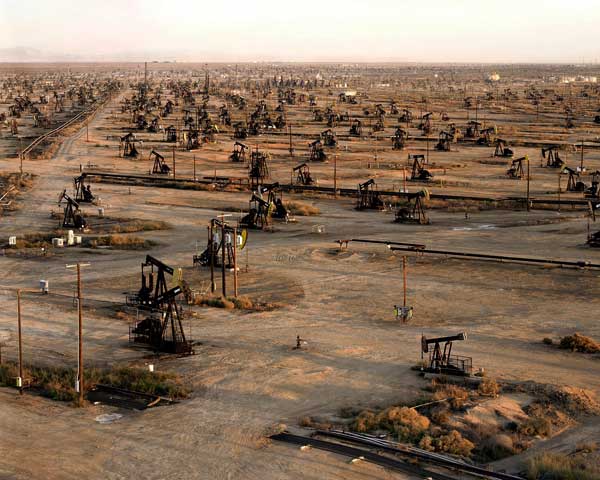Reply To:
Name - Reply Comment
.jpg) As exploration for oil and gas, which are nonrenewable resources, get more difficult, it is imperative that the flow rates and recovery factors have to be increased in the existing fields.
As exploration for oil and gas, which are nonrenewable resources, get more difficult, it is imperative that the flow rates and recovery factors have to be increased in the existing fields.
To this end, especially in mature petroleum provinces, which are also advanced in exploration such as the North Sea, it would be feasible for International Oil Companies (IOCs) to stop ‘wild cat’ exploration and focus on increasing production in and around existing oil and gas fields.
Accordingly, Statoil, the Norwegian company, is reported to have plans to increase average recovery rates from its fields on the Norwegian Continental Shelf (NCS) to 60 percent.
In general, we can divide the technologies to achieve higher production into two categories- namely, those focused on reservoir and wells and to those to do with the top-sides.
Reservoir and wells
The methodologies include:
nRecognizing where there are reserves of undeveloped hydrocarbons - key technologies are reservoir monitoring (using 4 D seismic/permanent seismic monitoring) production monitoring reservoir simulation, history matching.
nMobilizing these reserves towards the well bores – key technologies include enhanced oil recovery (EOR) mechanisms (microbial, CO2 floods, etc.)
Top sides
The broad themes are improving operational efficiency (including ‘de-bottle necking’) monitoring and improving operational integrity, safety and cost reduction.
The Digital Oil Field then provides an enabling framework in which these key technologies can be deployed for operational efficiency and effectiveness- key aspects include automation and collaborative working environments.
Especially in off shore operations (as in Sri Lanka, hopefully in the future) achieving both production performance and recovery factor improvements requires an integrated field development plan and it is not a matter of simply introducing a single technology.

Increasing recovery factors
The consultancy group, Sandrea and Sandrea estimates the global recovery factor; the percentage of the total conventional oil volume likely to be produced in the world’s oil fields is only 22 percent of the oil in place. Using a value of 2158 billion barrels of oil for the ultimate recoverable volume and a 22 percent recovery factor, the estimate global STOIIP (Stack Tank Oil Initially in Place) is 9800 billion barrels. The 22 percent global recovery factor in earlier published estimates was in the range of 22-35 percent which are over–optimistic.
It is also reported that typical recovery factors worldwide are variable. Average recovery factors in the North Sea are reported to be 45-46 percent, the highest in the world, compared with 39 percent in the USA and 23 percent in Saudi Arabia. The examples of individual fields with high recovery factors are Statfjord (North Sea) and Prudhoe Bay (Alaska) with 66 percent and > 47 percent, respectively.
Focusing on Enhanced Oil Recovery (EOR) Awan et al has studied all North Sea EOR projects started in the 30 years from 1975 to 2005 and also reviewed microbial EOR projects worldwide. Approximately 63 percent of the North Sea projects were on the Norwegian Continental Shelf (NCS), 32 percent on the United Kingdom Continental Shelf (UKCS) and the rest in the Danish waters.
Statoil has been the leader in conducting EOR field operations in the North Sea. Awan et al concludes that microbial processes, Co2 injection and water alternating gas (WAG) injection are the most relevant technologies. Increasing current recovery factor of 45 percent to the 60 percent target for oil and 75 percent for gas established by the Norwegian Ministry of Petroleum and Energy would yield approximately 4 billion barrels of oil.
The 22 percent recovery factor means that 78 percent of the world’s oil will be left behind once all the oil fields are shut and abandoned and only 3 percent of the world’s oil is currently produced as a result of Enhanced Oil Recovery (EOR) technologies.
However, experience with one EOR method, the injection of CO2 in the USA and in other parts of the world can result in the increase of 7 to 15 percent. Accordingly, for the UKCS, it has been estimated that an additional 2.7 to 8 billion barrels of oil reserves could be extracted in a factor ranging from 4 to 12 percent.
The US Department of Energy has estimated that a minimum of 30 billion barrels is recoverable by CO2-EOR provided the CO2 supply can be found. It must be stressed that the increasing recovery factors depend on the range of technologies described earlier such as EOR, etc. Accordingly, just a 1 percent increase in the global recovery factor represents almost 90 billion barrels of oil equivalent to 3 years of production at current levels.
It must be stated that very large increase in volumes of oil can be expected by increasing recovery factors using modern day technologies. Accordingly, IOCs can choose from many investment options with varying economic indicators with a ‘bench mark’ price of US$ 70 a barrel. The available options include service contracts in Iraq, EOR projects on existing fields, full cycle deep water projects (from exploration through production), full cycle Shale Oil (for example on shore in the USA).
It is believed that the current 10 percent of all existing discovery volumes that has already reached production is in a very lower limit and in many instances, a rising oil price will ensure that primary/secondary/tertiary recovery projects are economic although in some instances it may be necessary for governments to give tax incentives to help recovery projects.
Accordingly, for major economies such as the USA and the European Union, such support to enhance recovery rates of oil and gas would have significant political advantage of reducing both dependence on imported oil and outward flow of funds.
Extensively quoted from an article titled ‘The Best Place to Find Petroleum’ written by David Bamford – Oil Voice Magazine December 2012.
(The writer, a retired Economic Affairs Officer United Nations ESCAP can be reached at [email protected])